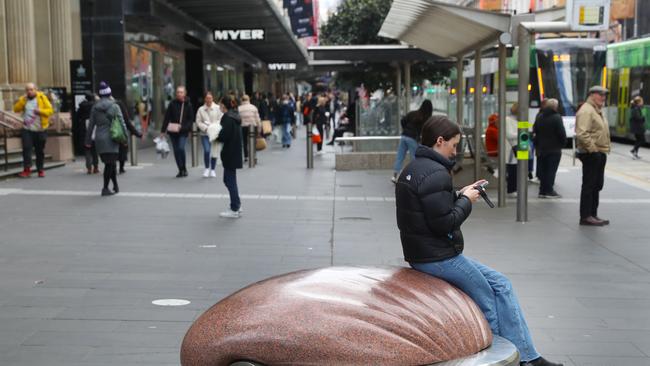RBA rates hike back in play as wages soar
Wages grew at their fastest pace in at least 25 years in the three months to September, with economists saying the data would place more pressure on the RBA to hike interest rates.

Wages grew at their fastest pace in at least 25 years in the three months to September on the back of record pay increases for aged care and low income workers, with economists saying the data would place more pressure on the Reserve Bank to hike interest rates.
The wage price index climbed by 1.3 per cent in the most recent quarter – the fastest pace in records stretching back to 1997 – bringing the annual rate from 3.6 per cent to a 14-year high of 4 per cent, according to the Australian Bureau of Statistics.
A tight labour market and wage and salary decisions incorporating still-high inflation also accounted for the big quarterly rise in pay rates, the ABS said, as a record nearly half of private sector jobs received a pay rise, with the average lift at 5.8 per cent.
As analysts warned that pay growth could come in ahead of the RBA’s wages forecasts, UBS chief economist George Tharenou said there was evidence of “a significant spillover” from the Fair Work Commission’s decision to other workers, given award wages directly covered only 20-25 per cent of employees.
Despite the ABS’s wage price index rising at twice the pre-pandemic average, wages growth is lagging below inflation of 5.4 per cent, implying a 1.4 per cent real pay cut over the year.
Jim Chalmers in parliamentary question time, however, was quick to note that wages had now climbed faster than consumer prices for six months.
“Wages growth is a deliberate design feature of our economic plan,” the Treasurer said.
“That is why we supported an increase to the minimum wage. It is why we supported decent pay for aged-care workers and that was recognised in today’s (ABS) release.”
Analysts said wage growth in the three months to December should retreat to more typical quarterly rates of 0.8-0.9 per cent, and most agreed that the widely anticipated jump in the WPI through the September quarter would not trigger an immediate response from the RBA board when it meets on December 5.
ANZ senior economist Catherine Birch said the Fair Work Commission had lifted the award and minimum wage by about 10 per cent over the past two years in response to galloping inflation.
Ms Birch said the latest quarterly figure was a “one-off”, but that “the momentum in wage growth for workers on individual arrangements was also a little stronger than expected, reflecting still very tight labour market conditions, despite some recent easing”.
Citi chief economist Josh Williamson said the record wage figure would “keep pressure on the RBA to increase interest rates again”, most likely at the central bank’s February meeting.
“We expect further strong wages growth that, combined with weak productivity growth, will require further policy tightening,” he said.
Annual growth in private sector wages accelerated from 3.9 per cent in June to 4.2 per cent in September, while public pay lifted from 3.1 per cent to 3.5 per cent, the seasonally adjusted figures showed.
ABS head of prices statistics Michelle Marquardt said “the public sector was affected by the removal of state wage caps and enterprise agreements coming into effect following finalisation of various bargaining rounds”.
The ABS data showed the biggest pay rises were in low-paid industries, where a high share of employees benefited from the big boost to award wages.
Wages for hospitality workers jumped by 3.2 per cent in the quarter, and by 5.5 per cent in the year to September, with some workers receiving two award increases in the past 12 months, the ABS said.
In the healthcare and social assistance sector, wages climbed by 3.1 per cent in the three months, and by 4.9 per cent annually, while retail industry pay rates were 4.4 per cent higher than a year earlier.
The RBA believes that wage growth of 3.5-4 per cent is consistent with achieving the 2-3 per cent inflation target over time, provided the country can lift its productivity growth rate back to pre-pandemic rates of 1 per cent.
The central bank projects wages growth will end this year at 4 per cent, before easing to 3.7 per cent through 2024.
NAB senior economist Taylor Nugent said a rate hike in February remained “plausible”.
“It is not at all obvious WPI growth near 4 per cent is consistent with 2-3 per cent inflation over time; that would require productivity growth to pick up substantially,” he said.




To join the conversation, please log in. Don't have an account? Register
Join the conversation, you are commenting as Logout